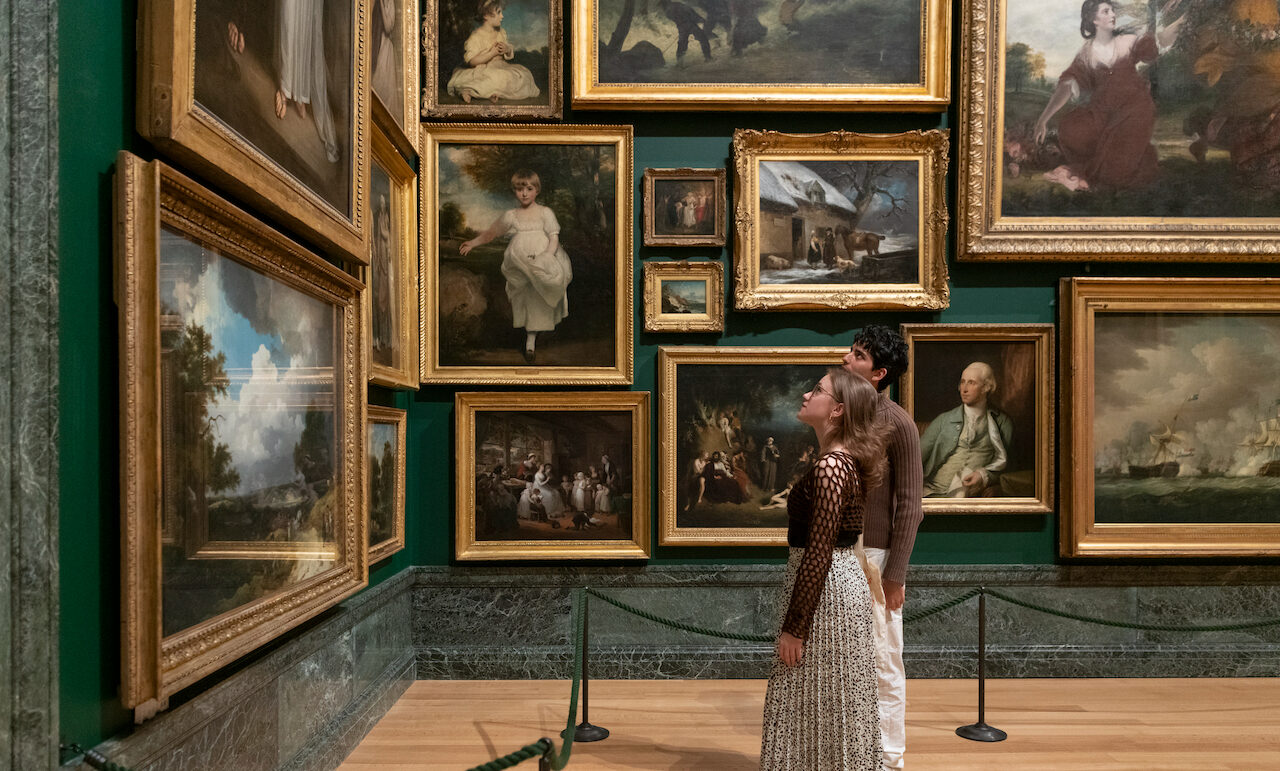Tate Britain Rehang

Over the course of its 126-year existence, Tate Britain has come to be recognised as a bastion of the nation’s art. Now, a decade after his predecessor Penelope Curtis’s (by no means universally hailed) rehanging, the gallery’s current director, Alex Farquharson, has initiated a far-reaching overhaul of the display that has taken one year to complete. While retaining the essentially chronological arrangement of before, this seismic reshuffle of some 800 works represents a major shift on the part of the institution. Farquharson has stated his intentions of “relating art to society, Britain to the world and the past to the present.”
Every room has been curated thematically. Exiles and Dynasties (1545-1640), focusing on the contribution made by artistic migrants to the UK, features, among others, the Baroque maestros of the brush, Anthony van Dyck and Peter Paul Rubens. Exodus II (2002), a sculpture by Mona Hatoum in the form of suitcases, has been positioned in the centre of this room, the contemporary artist having been forced into exile during the Lebanese Civil War. Throughout this extensive rehanging, Farquharson repeatedly juxtaposes modern-day works with the art of the past, dubbing these “stealthy interruptions.”
Considerable efforts are made here to turn the traditional canon on its head, with more women and artists of colour now represented. In the second gallery, named Court Versus Parliament (1640-1720), visitors encounter newly acquired portraiture by Joan Carlisle, who was apparently one of the first professional women painters in the UK, together with Mary Beale and Anne Killigrew. The Civil War, culminating in regicide, is brought to the fore here alongside the emergence of political parties.
Elsewhere in the building, one finds the 18th century Royal Academician Angelica Kauffmann, Victorian Henrietta Rae and Winifred Nicholson, the latter appearing in the area dedicated to International Modernism. An entire space is afforded to Annie Swynnerton, campaigner for women’s suffrage and influential member of the Royal Academy. In a room focused on post-war pop art, In Full Colour, Pauline Boty – forgotten for many years – features in the form of Only Blonde in The World, a self-portrait of herself as Marilyn Monroe. Boty’s Royal College of Art contemporary, Peter Blake’s self-portrait as a denim-clad Elvis fan can be seen nearby.
Not everyone will inevitably find this rehanging to their liking. The Exhibition Age room, packed to the rafters with paintings in the traditional salon style, looks set to trigger delight and disdain in perhaps equal measure. There is definitely amusement to be found in those great rivals Reynolds and Gainsborough being displayed so closely together. Others will find the lack of labelling in this area frustrating and the positioning of some pieces so high up unconducive to contemplation.
The Metropolis Gallery is dominated by that master of social satire, William Hogarth, and the Venetian landscape painter, Canaletto. Unexpectedly, viewers come across a lively drawing by the contemporary Argentine artist Pablo Bronstein depicting his vision of an 18th-century Molly House, a place where gay men would mingle at a time when homosexuality was punishable by death.
One still finds the established figures here, although some reordering has taken place. JMW Turner’s seven rooms of work in the Clore Gallery have been kept intact. One room filled with Turner’s studies of sunsets now sees the Englishman’s work accompanied by Yuri Pattison’s sun[set] provisioning (2019) in which screen images are generated in real-time by a machine monitoring carbon dioxide levels in the room and pollution. Meanwhile, Henry Moore and Francis Bacon have been exhibited together surprisingly successfully in a medley of bodily contortion. Elsewhere, William Blake is placed in a room alongside the Turner Prize-winning Chris Ofili, the Young British Artist’s small, colourific work resonating with that of his hero around the other side of the partition.
Much attention is paid in this rehanging to how art always emerges from particular social and cultural conditions. Farquharson emphasises how the rehauled galleries are now telling “very much a global, as well as a national, story.” Major themes are brought under the spotlight: the industrial revolution, women’s rights, LGBTQ+ and black experiences, the British Empire and its repercussions and the environment.
Farquharson’s plan to provide a “more truthful account of history” has led to the updating of labels to draw upon the impact of slavery, colonialism and racism. Emma Soyer’s Two Children with a Book was painted two years prior to the 1833 Slavery Abolition Act, signalling a change in the tide of public opinion.
Other works are reinterpreted here with considerably less rose-tinted spectacles. Flemish painter Joseph Van Aken’s ostensibly inoffensive portrait of a family taking tea in 1720 is accompanied by a label indicating how tea was sweetened with sugar made in the Caribbean by an enslaved African workforce. Agostino Brunias’ Dancing Scene in the Caribbean (1764-96) is condemned as a “highly idealised picture of slave-owning society”, which makes no reference to the horrors of forced labour.
This concerted attempt to redress the balance of Tate Britain’s display has resulted in half of the living artists on show being women and a notable increase in works by artists of colour. The final room, chronologically speaking, is the rather ominously entitled, The State We’re In (2000-now), which reflects the diversity of the contemporary British art scene. Wolfgang Tillmans’s large photograph of a choppy ocean is said by the artist to evoke the post-Brexit political climate. Hanging alongside is his fellow Turner-prize winner Lubaina Himid’s painterly depiction of two black women looking out from a boat’s deck off the coast of Portsmouth. Enlivened by new acquisitions, Tate Britain’s bold rehaul will provide a fresh perspective on this renowned collection of British art.
James White
Tate Britain Rehang opens on 23rd May 2023. For further information visit the exhibition’s website here.
























Facebook
Twitter
Instagram
YouTube
RSS